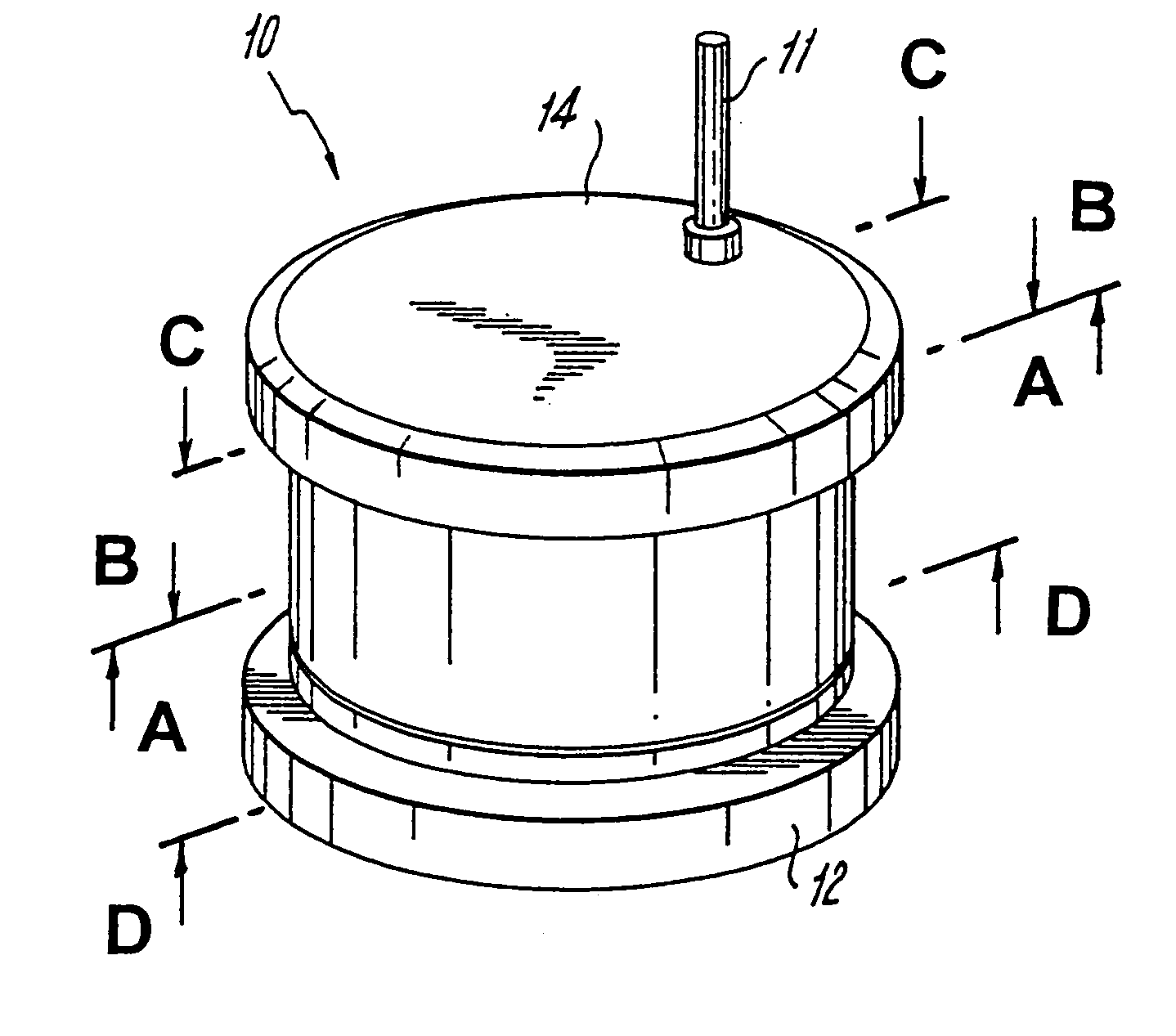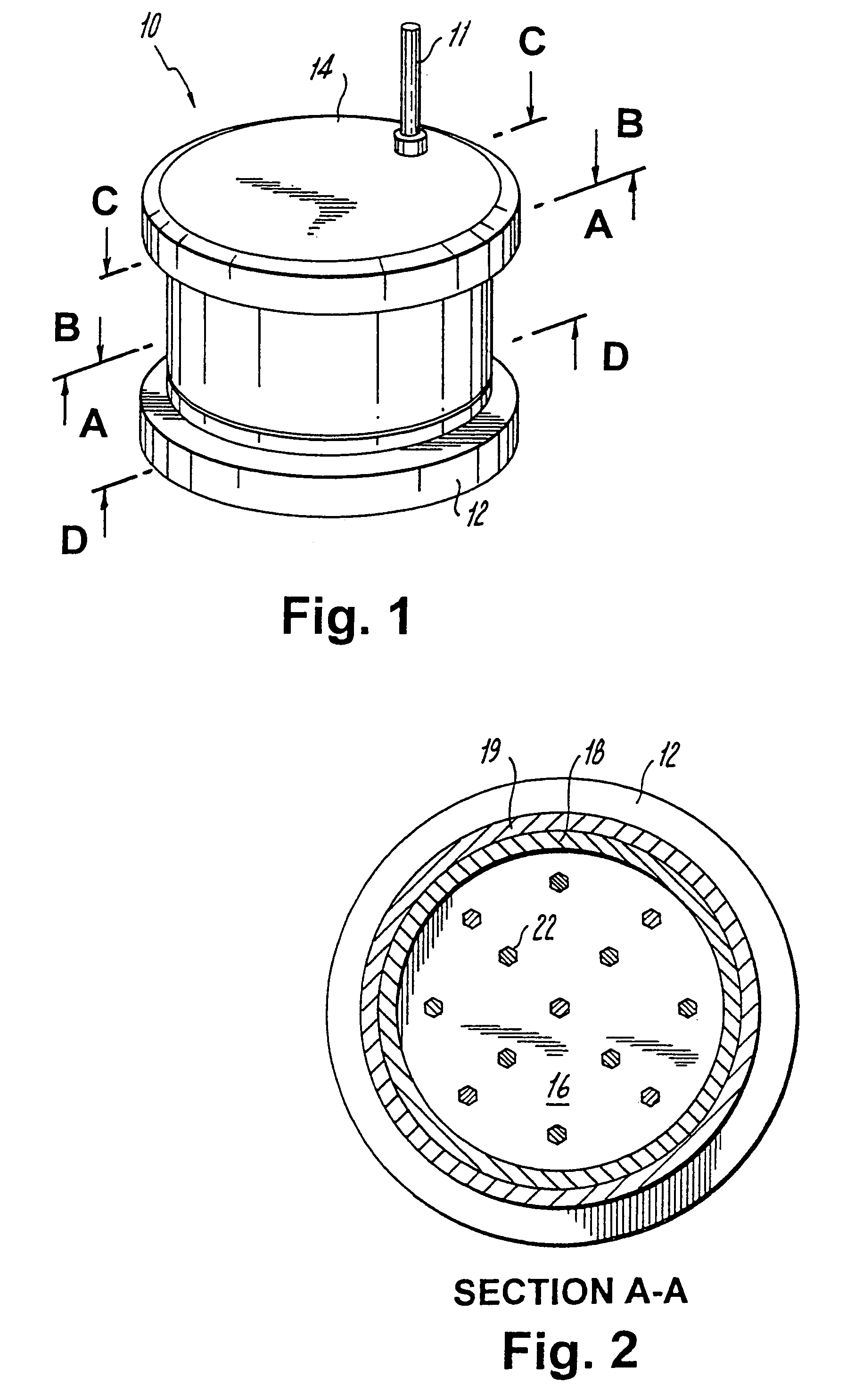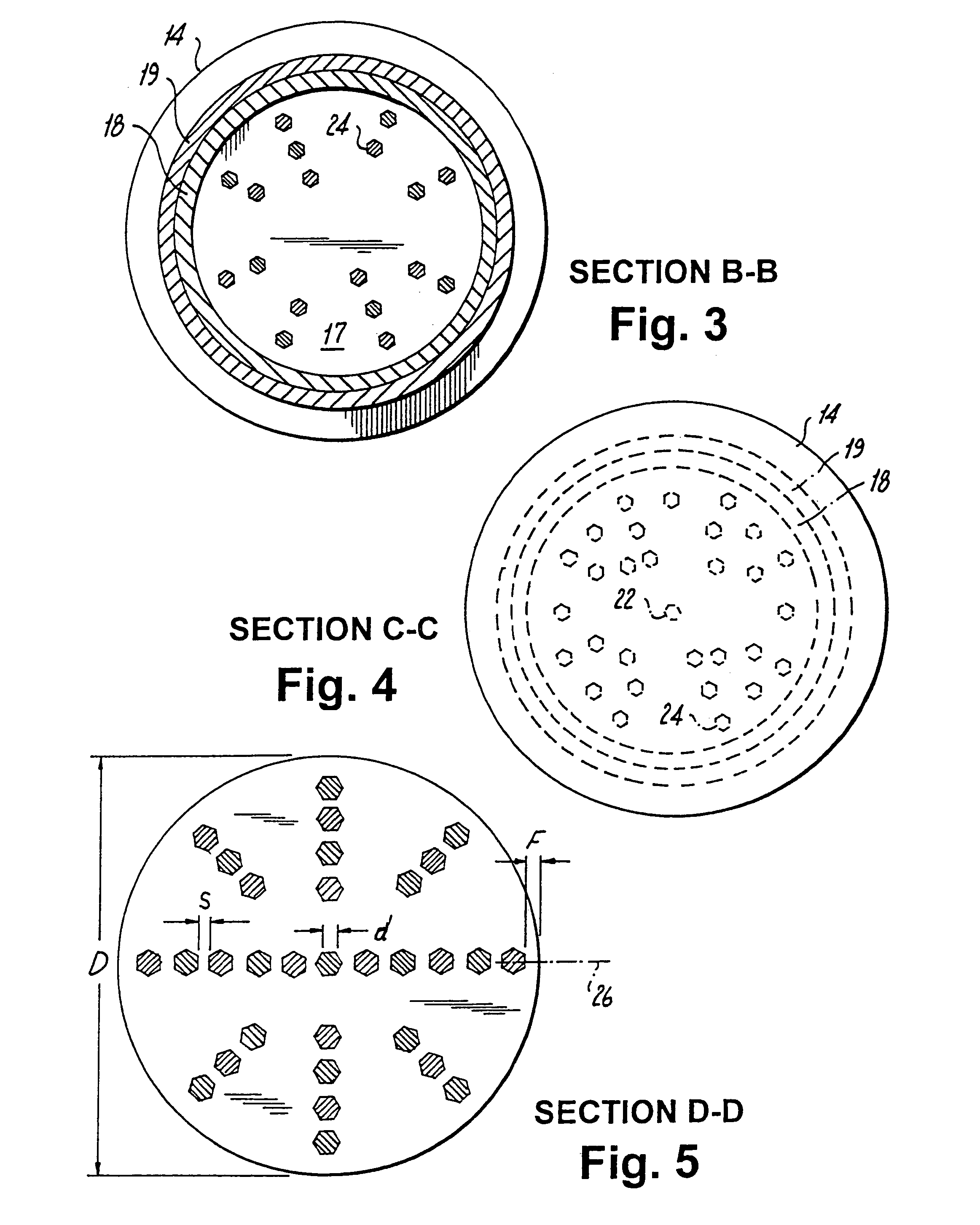Comminuting device
a technology of a comminution device and a cup is applied in the field of comminution devices, which can solve the problems of high cost of individual parts replacement, high susceptibility to jamming, and large devices, and achieve the effect of minimizing friction and avoiding the damage of cups
- Summary
- Abstract
- Description
- Claims
- Application Information
AI Technical Summary
Benefits of technology
Problems solved by technology
Method used
Image
Examples
example 1
[0071]Any size of the comminuting device and the configuration of the pins 22 in the male mating device 12 can be easily determined by using the formulas described above. Thus, if a male mating section 12 whose internal diameter, D, is 35 mm, F is 0.75 mm, and each pin 22 has a diameter, d, of 1.4 mm with a desired spacing, S, between the interdigitating pins of the assembled device of 1.6 mm, then the total integral odd number of pins required for the assembled device along the major axis of the device would be:
35=(n)(1.4)+1.6(n−1)+2(0.75)
35=1.4n+1.6n−1.6+1.5
35=3.0n−0.1
3.0n=35+0.1
3.0n=35.1
[0072]Since n should be an odd integer, the value of n is rounded off to the nearest odd integer. In this instance n should be 11. In the event that the value of n is an even number, the value of n is rounded off to the nearest odd integer. Thus, if the value of n for a different set of parameters works out to be 12.2, then n should be rounded off to the nearest odd integer. Such number could be e...
example 2
[0079]If it is desired to determine the internal diameter of a male mating section 12 of a comminuting device described herein, knowing that the number, n, of pins to be used is 15, and the diameter, d, of each pin is 1.38 mm, with the spacing, S, between interdigitating pins is 1.62 mm, and F is 0.75 mm, then the internal diameter, D, of the male mating section 12 can be calculated as follows:
D=(n)(d)+S(n−1)+2F
D=(15)(1.38)+1.62(15−1)+2(0.75)
D=20.7+22.68+1.5
D=44.88 mm
[0080]The number of orbits, O, concentric with the central pin is:
O=(n−1) / 2
O=(15−1) / 2
O=14 / 2
PUM
 Login to View More
Login to View More Abstract
Description
Claims
Application Information
 Login to View More
Login to View More - R&D
- Intellectual Property
- Life Sciences
- Materials
- Tech Scout
- Unparalleled Data Quality
- Higher Quality Content
- 60% Fewer Hallucinations
Browse by: Latest US Patents, China's latest patents, Technical Efficacy Thesaurus, Application Domain, Technology Topic, Popular Technical Reports.
© 2025 PatSnap. All rights reserved.Legal|Privacy policy|Modern Slavery Act Transparency Statement|Sitemap|About US| Contact US: help@patsnap.com



